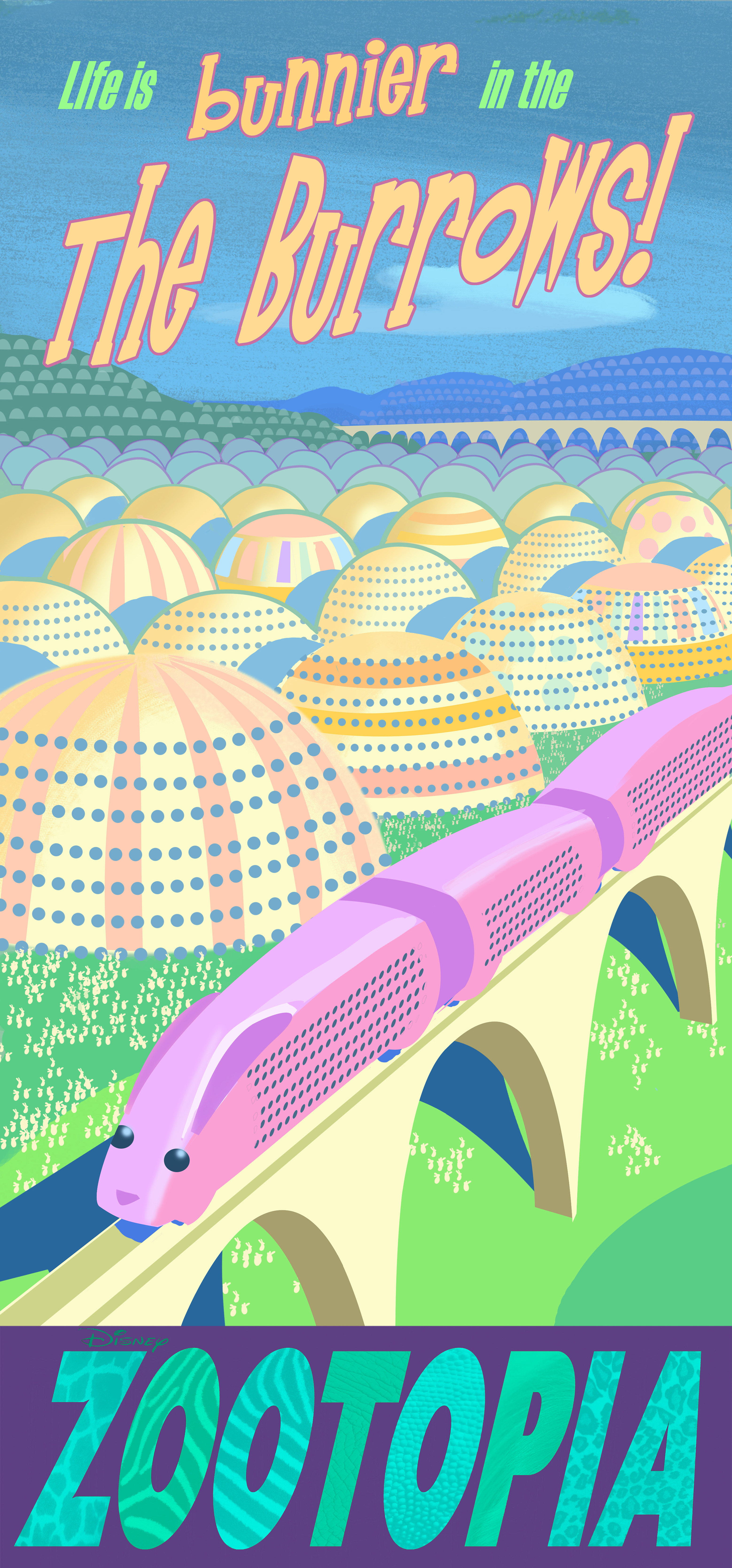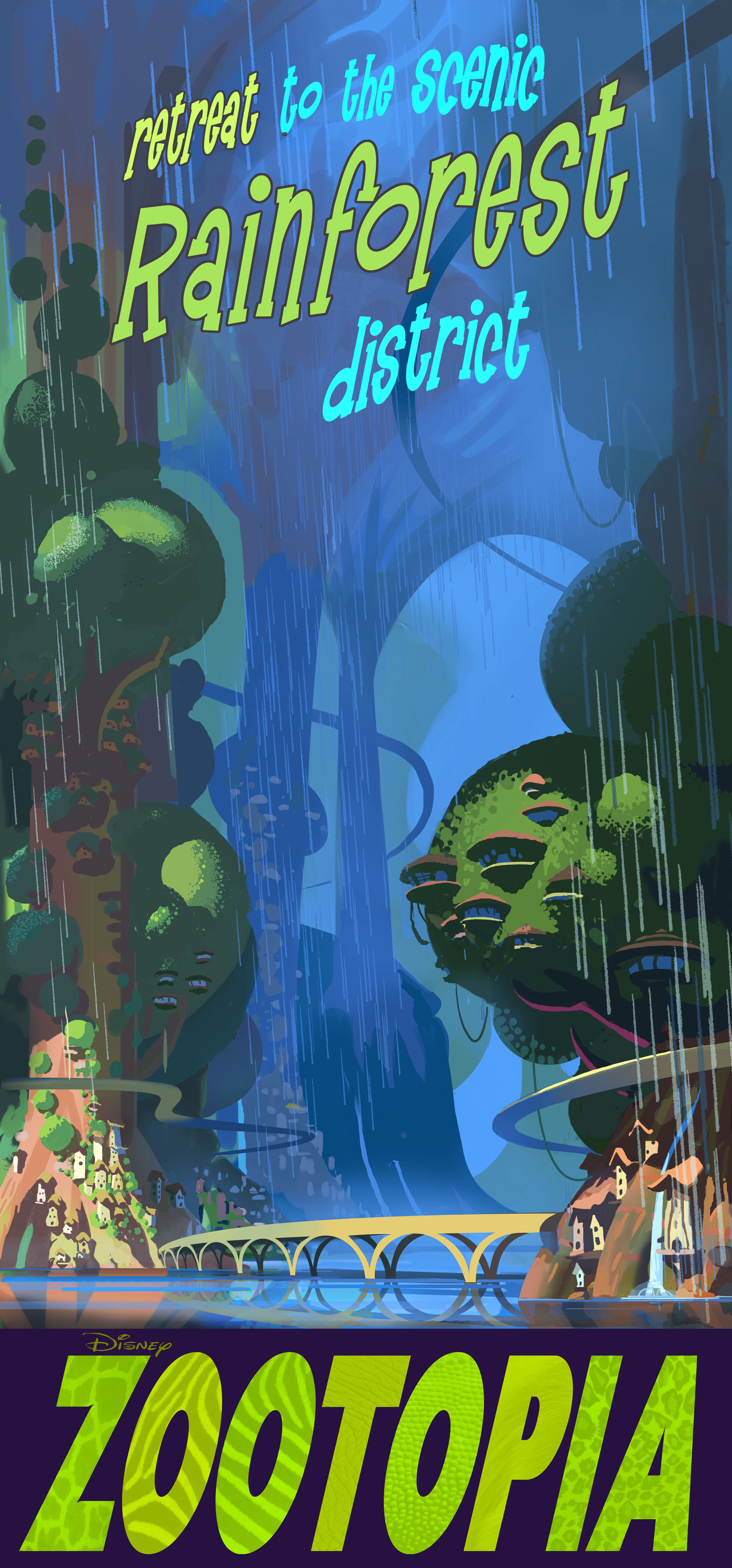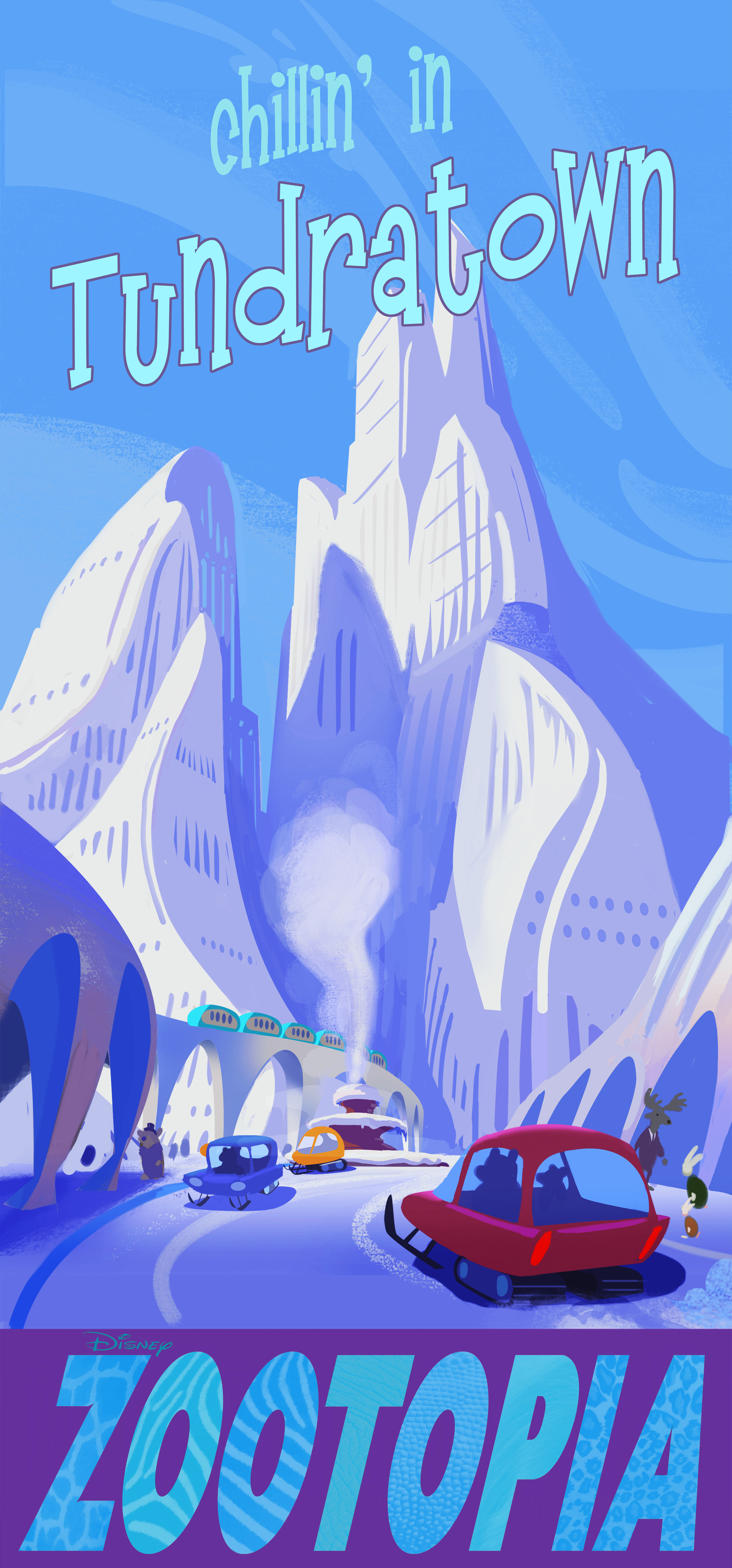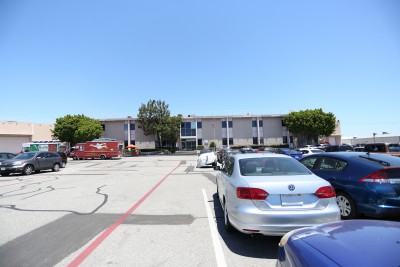 At this very moment in Tujunga, a twenty-minute drive from Walt Disney Animation Studios, sits a team of displaced artists hard at work on the next animated feature, Zootopia. Passersby likely have no clue that magic is being made inside this nondescript warehouse, but to anyone granted access inside, it’s clear that this is no ordinary building. With a themed atrium, personalized cubicles and plenty of relaxation zones, the artists have made this bland concrete building their eclectic home for the remainder of production.
At this very moment in Tujunga, a twenty-minute drive from Walt Disney Animation Studios, sits a team of displaced artists hard at work on the next animated feature, Zootopia. Passersby likely have no clue that magic is being made inside this nondescript warehouse, but to anyone granted access inside, it’s clear that this is no ordinary building. With a themed atrium, personalized cubicles and plenty of relaxation zones, the artists have made this bland concrete building their eclectic home for the remainder of production.
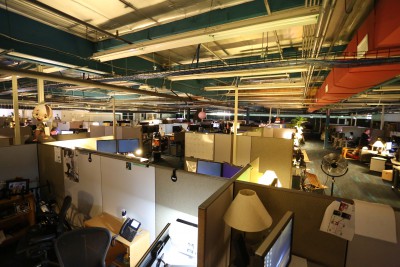 This isn’t the first time a Disney animated feature has been made off-property. In the late 1980’s, the animation department was kicked off the studio lot, into warehouses and trailers where classics like The Little Mermaid and Beauty and the Beast were made. The success of those films helped build the current studio, which features Mickey’s sorcerer hat inviting talented artists inside to create something special. Now overdue for a renovation, the production unit behind Zootopia has settled into their Tujunga campus to tell their story while their home gets some TLC.
This isn’t the first time a Disney animated feature has been made off-property. In the late 1980’s, the animation department was kicked off the studio lot, into warehouses and trailers where classics like The Little Mermaid and Beauty and the Beast were made. The success of those films helped build the current studio, which features Mickey’s sorcerer hat inviting talented artists inside to create something special. Now overdue for a renovation, the production unit behind Zootopia has settled into their Tujunga campus to tell their story while their home gets some TLC.
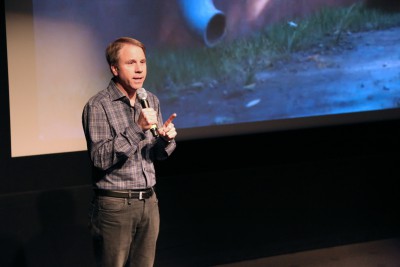 My visit to the Tujunga campus began with an introduction by Clark Spencer, Disney animation producer extraordinaire. His past producing credits include Lilo & Stitch, Bolt and Wreck-It Ralph. “I’ve never been more proud of a film,” he gushed as he began to describe Zootopia. Let that sink in for a moment; The producer of three of the most amazing animated films of the modern era, and he’s never been more proud of a film he’s worked on.
My visit to the Tujunga campus began with an introduction by Clark Spencer, Disney animation producer extraordinaire. His past producing credits include Lilo & Stitch, Bolt and Wreck-It Ralph. “I’ve never been more proud of a film,” he gushed as he began to describe Zootopia. Let that sink in for a moment; The producer of three of the most amazing animated films of the modern era, and he’s never been more proud of a film he’s worked on.
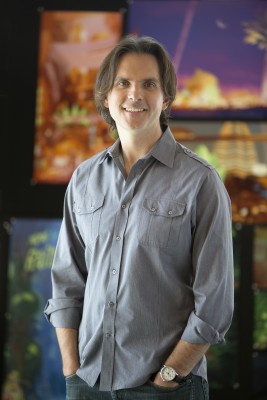 Co-director Byron Howard, who was a director on Tangled, had always wanted to make a film about anthropomorphic animals in the tradition of films like Disney’s Robin Hood. John Lassiter was so ecstatic that he picked Byron up and gave him a big hug when he made the pitch. His initial reel about a seemingly utopian society of animals not being entirely perfect opened the doors for this original story to be created.
Co-director Byron Howard, who was a director on Tangled, had always wanted to make a film about anthropomorphic animals in the tradition of films like Disney’s Robin Hood. John Lassiter was so ecstatic that he picked Byron up and gave him a big hug when he made the pitch. His initial reel about a seemingly utopian society of animals not being entirely perfect opened the doors for this original story to be created.
In the city of Zootopia, all of the animals seem to share resources harmoniously. The arctic animals live in Tundra Town, which uses a large wall of air conditioners to keep it frosty. The exhaust feeds the heat of Sahara Square on the other side, a dessert climate for animals that love heat. And the condensation provides humidity to the Rainforest District. Because of this, it’s easy to see why a wide-eyed, bushy tailed (literally) optimist like Judy Hopps from Bunny Burrows would be so eager to move to the big city to pursue her dreams of being a police officer.
By now, you’ve likely seen the second trailer for Zootopia, which gives a great indication into the type of humor you can expect from the film. This abridged DMV scene (Department of Mammal Vehicles) finds poor Judy Hopps trying to run a license plate in a hurry. Unfortunately, the DMV is run entirely by sloths. And to make matters worse, she’s there with Nick Wilde, a fox whose goal in life is to watch her fail. If you haven’t seen it yet, there’s no time like the present.
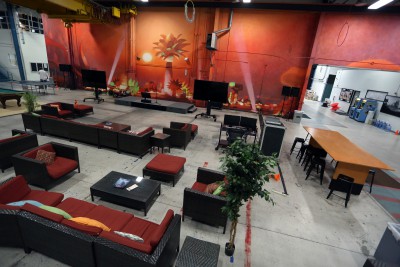 Zootopia stampedes into theaters in just three months on March 4th. I learned a lot in the few short hours that I spent inside the Tujunga campus and I’ll be sharing more discoveries as we get closer to the release. Look forward to diving deep into the story department, finding the motivations behind the main characters, discovering how real animals influenced the movements and behaviors of the cast, and the thought process behind how the city was constructed. I’m so excited for Zootopia and I can’t wait to share more about it with you.
Zootopia stampedes into theaters in just three months on March 4th. I learned a lot in the few short hours that I spent inside the Tujunga campus and I’ll be sharing more discoveries as we get closer to the release. Look forward to diving deep into the story department, finding the motivations behind the main characters, discovering how real animals influenced the movements and behaviors of the cast, and the thought process behind how the city was constructed. I’m so excited for Zootopia and I can’t wait to share more about it with you.

